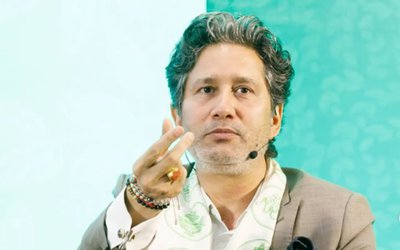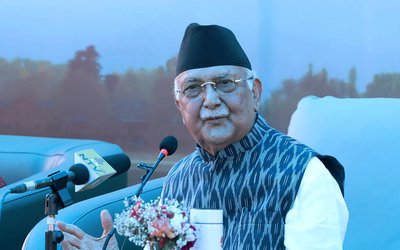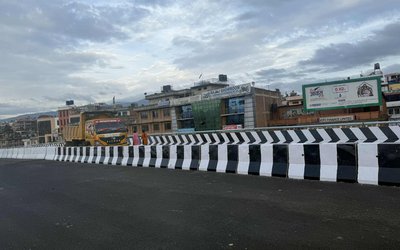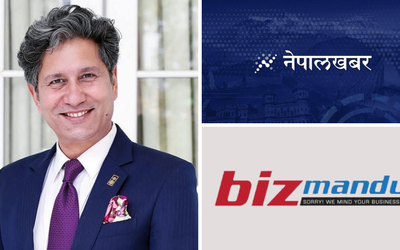More on News






ATMA RAM PANDEY, joint secretary at National Planning Commission, is now looking at social sector in NPC. As Nepal has made some progress in MDGs, particularly in the social sector, Pandey spoke to NEW SPOTLIGHT on various issues. Excerpts:
What does the social sector involve?
The social sector involves health, education and gender development. This is a very important sector for the overall development of the country. Even MDGs targets consist of increasing enrolment of school children in education, reducing maternal mortality, and infant mortality in health sector. Nepal has already made progress in maternal mortality and child mortality. Under gender development , we have been working to reduce the disparity between women and children.
How can you reduce the gender disparity?
We have already introduced gender responsive budget system, focusing on gender focal point, and gender development plan. We celebrated the year 2011 as a year against domestic violence. Our commitment is to zero tolerance. We have given priorities to give justice to women who faced violence. Nepal’s development partners have also been supporting us. The current three years Interim Plan also stresses overall gender friendly atmosphere in the country. We have already made progress in gender development index. We are categorizing various districts on the basis of that index. We are now in a process to prepare the gender development strategy.
What are the highlights of the gender programs?
Under the gender responsive budget program, gender-based budget allocation and gender related issues will be in focus. We are now proposing gender audit. The government has made commitments to CEDA and other such international conventions. Under these obligations, we have to address the gender related issues as much as possible by mainstreaming gender related issues in health, education and other sectors. This will be in all the sectors, including at the policy level. Existing policies, rules and regulations should be gender friendly. The process is going on.
What are the challenges before NPC?
One of the challenges is in mainstreaming the gender agenda. It will take a lot of time. The dissolved CA has a women caucus and they have demanded more focused programs for women. Budget allocation is necessary for this. We have definitely made progress in gender terms. Out of 601 members in the CA, 33 percent were women. This is the highest representation of women in policy level in South Asia. This is exemplary in the region. In many executive positions, women’s participation has gone up, including bureaucracy and public owned enterprises, for instance the Public Service Commission.
What is the state of school going children?
In the school, enrolment of girl children has drastically increased. In some districts, enrolment of girls is much higher than boys. In education, we are pursuing the agenda for education for all focusing on primary education. The government is planning to provide free education up to class 12. Now the education is free up to class 8.
What is there for the marginalized communities?
We are now making the National Social Protection framework. Under this framework, there will be various scholarships for excluded and marginalized communities. Under School Sector Support Program, Nepal’s development partners are providing fund to support such communities. This program helps to improve logistic, physical and other environment in schools. There are also local child friendly government initiatives which are currently under the Ministry of Local Development. MOLD has already implemented Local level Governance Guidelines.
How do you see the role of Nepal’s development partners?
Under the support from Nepal’s development partners, the government is running many social sector programs. With the support from Nepal’s development partners, the government is implementing early childhood development centers in the country. There are more than 28,000 ECDs now. Other important program is the literacy campaign through informal education. In higher education, the World Bank has supported a project under University Grant Commission. The commission is providing funds to community colleges and other universities for improvement of their infrastructure.
Is there any policy change happening?
In education sector, we are encouraging science and vocational education. There is a plan to support one science college of each constituency. There are also plans to introduce integrated education system for 8 to 12 classes. In higher education system, phase-out of PCL level is a milestone. Now, there are higher secondary schools. There is also the CTVT for technical education. We are focusing on education based on employment orientation. There are also annex programs.
How do you see the problems in the education sector?
One of the challenges in higher education system is that there is a lack of an act to govern all the universities. This is the reason the government has tabled an umbrella act to manage various universities. This act will give the regulatory authority. Private sector is not cooperative to the government. Although the school education system is under the domain of government, the higher education system does not have this kind of facilities.
How do you see the impacts of these programs?
We have made major progress in reducing maternal mortality rate and infant mortality rate under MDGs. We have also reduced the number of stunting population by providing nutrient foods for the children for first one thousand days. The Female Volunteer Health Workers have played important roles. Nepal also received an international award from the UN by achieving the target under MDG 4. We are known for early sun rise because of Nepal’s role in scaling up nutrition. UN Secretary General nominated one of the member in 27 countries for achieving the target. In nutrition sector, we have been doing our best. There are programs for WASH. There are multi sect oral programs. Due to immunization we have achieved many progresses.
How do you see the health related programs?
Under Nepal Health Sector Support Program II, Nepal’s development partners have been providing much needed resources to increase the reach of people in the health sector. There are certain needs and gaps. Our annual budget at present in the health sector is about 7-8 percent and there is demand to increase it up to 10 percent. Nepal’s development partners can play an important role here.






